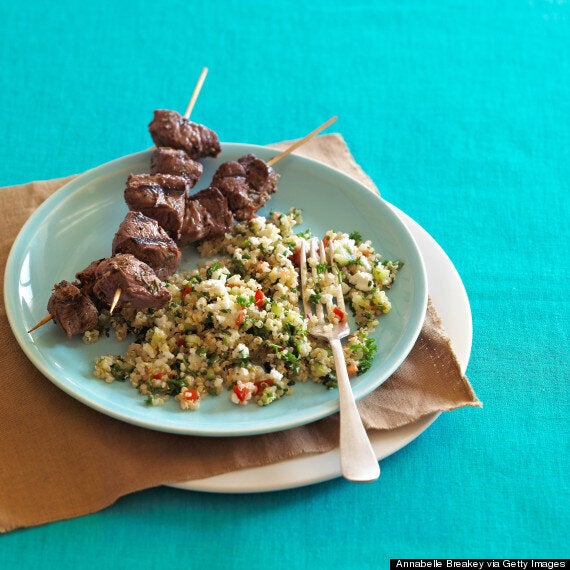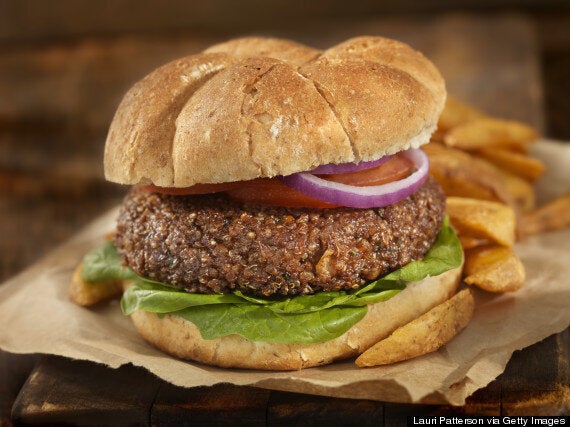Quinoa possesses all the properties on every dieter's wishlist: it has the texture of a grain but isn't one, and is packed with so much protein it's handy for people trying to tone up or vegetarians trying to boost their diet.
With so much emphasis on gluten-freefood, quinoa has never been better placed as an alternative. It's actually a plant, and has a similar texture to cous cous.
In fact, it works as a really great substitute for rice, pasta and oats. Even better, because it has become so popular, gone are the days when you had to buy it in a sack from your local health shop and rinse it 10 times to get rid of the bitter taste.
Now, you can buy it in vacuum packs that you pop in the microwave or supermarkets sell it by the bag-load.

So why would you want to pop it into your shopping basket?
Unlike bread and pasta, which is mainly used by the body as pure energy, quinoa is packed with minerals and vitamins meaning it's great for your health too.
It's a personal trainer's godsend because it contains both protein (good for building lean muscle) as well as carbohydrates, giving you a slow, sustainable release of energy while helping you to tone up at the same time.
Vicki Edgson, founder of Honestly Healthy, loves the stuff. She says: "It's a rich source of zinc and selenium, both of which boost immunity, as well as abundant B vitamins, required for energy, mood and concentration."
Nutritionist Karen Poole is aware that it has a high carbon footprint, but think it is a great, low-cost option to eating healthy.
"It is a complete protein providing the essential amino acids needed to build tissue and muscle, contains fibre to aid digestion and help gut function, offers the minerals iron and magnesium vital for energy production."

Protein helps the absorption of calcium, and quinoa provides this but without the saturated fat you'd find in another protein-heavy source such as lamb. Apart from strong bones, MSN Canada also claimed it helped lower high cholesterol.
They quoted a 2010 study conducted in the Netherlands, where rats bred to have high cholesterol were fed quinoa.
"These rats were also fed a high fructose diet that should further increase their harmful cholesterol (LDL) levels. After quinoa was introduced to the diet, the detrimental effects of the cholesterol and fructose began to reverse and cholesterol levels were returning to normal."
With around 120 types of quinoa, what should you buy?
"White quinoa is the most widely-available in stores," wrote HuffPost Healthy Living. "Red quinoa is more often used in meals like salads since it tends to hold its shape better after cooking. Black quinoa has an "earthier and sweeter" taste. You can also find quinoa flakes and flour."
Writing for HuffPost Canada, Diana Herrington, head chef on Real Food For Life mentioned the following health benefits:
1. A good source of riboflavin -- riboflavin helps reduce the frequency attacks in migraine sufferers by improving the energy metabolism within the brain and muscle cells.
2. The saponins from quinoa are used to promote healing of skin injuries in South America, making it a good antiseptic.
3. It's alkaline-forming. Although it is not strongly alkaline-forming, it is comparable to wild rice, amaranth, and sprouted grains.
4. It only has 172 calories per ¼ cup dry quinoa.
5. Since it is not related to wheat or grain, it's gluten-free. Millions are discovering they feel better and lose weight when they reduce gluten grains or at least wheat products.
6. It is a complex carbohydrate with low glycemic index. This is again good for weight management. I use it in a number of my health Boot Camps.
But how should you make it? Vicki has some ideas.
"I usually cook my quinoa in green, white or rooibosch tea that I have made previously to add to the antioxidant content of the finished dish. Adding turmeric, cumin and/or star anise to increase the immune boosting, anti-inflammatory properties makes the finished result not only delicious, but highly nutritious.
"I use quinoa cooked in this way to accompany savoury dishes, as part of salads, or as the base for risottos, rather than rice."
Some use quinoa flour (you can get it from Holland and Barrett) as a wheat-free alternative for cookies and flapjacks, others turn quinoa into burgers. Our favourite has to be in a salad with lots of fresh vegetables and herbs.